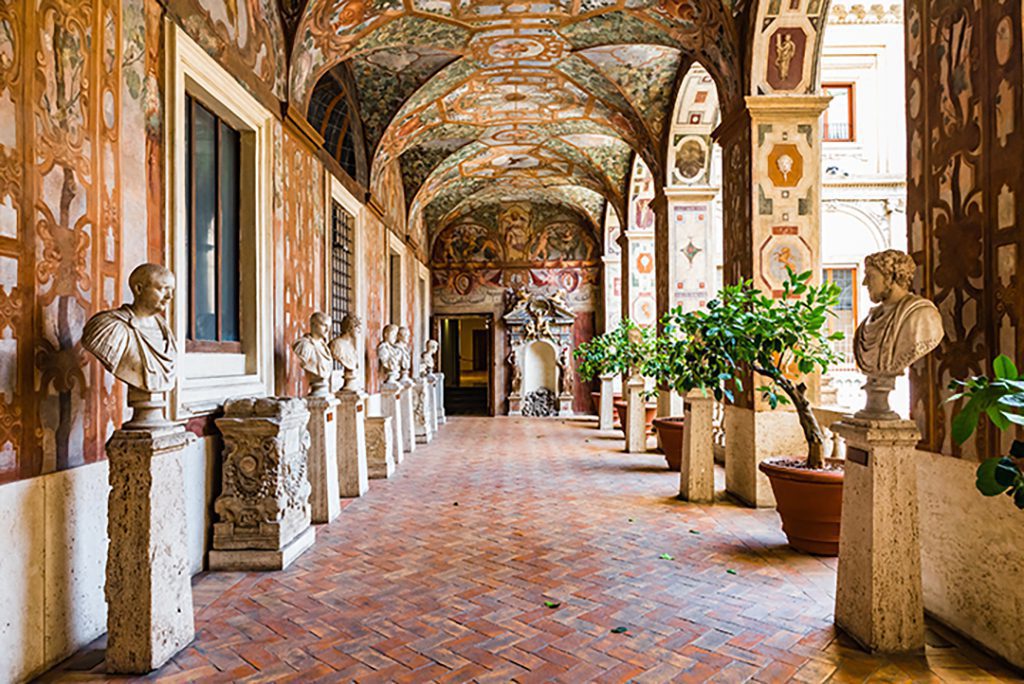What a wonderful city Rome is. This is the city where dreams are made of. This city takes great pride in its long and illustrious history, during which it conquered much of what is now Europe, Africa, and Asia. Christian history and artifacts abound throughout the city of Rome. Tourists seeing this city for the first time may feel daunted by its spectacular splendor. Indeed, it is possible to encounter works of art and historical significance on almost every block. Because of this, tourists planning a trip to the Italian capital could benefit from doing some preliminary research to narrow down their list of must-see attractions.
The Colosseum, Capitoline Hill, and the Roman Forum are just a few of the historic landmarks that can be seen in Rome’s central neighborhood, known as the Colosseo. Old Rome is located on the city’s outskirts and is home to the Pantheon and other spectacular cathedrals, plazas, and Renaissance architecture.
There just isn’t enough time on a short visit to Rome to take in all the city’s most famous sights. Responsible tourists know better than to try to see everything in just one trip. They throw a penny into the Trevi Fountain to make sure they’ll return to the Eternal City. Those who follow the instructions are said to be able to visit Rome again.
25. Baths of Caracalla
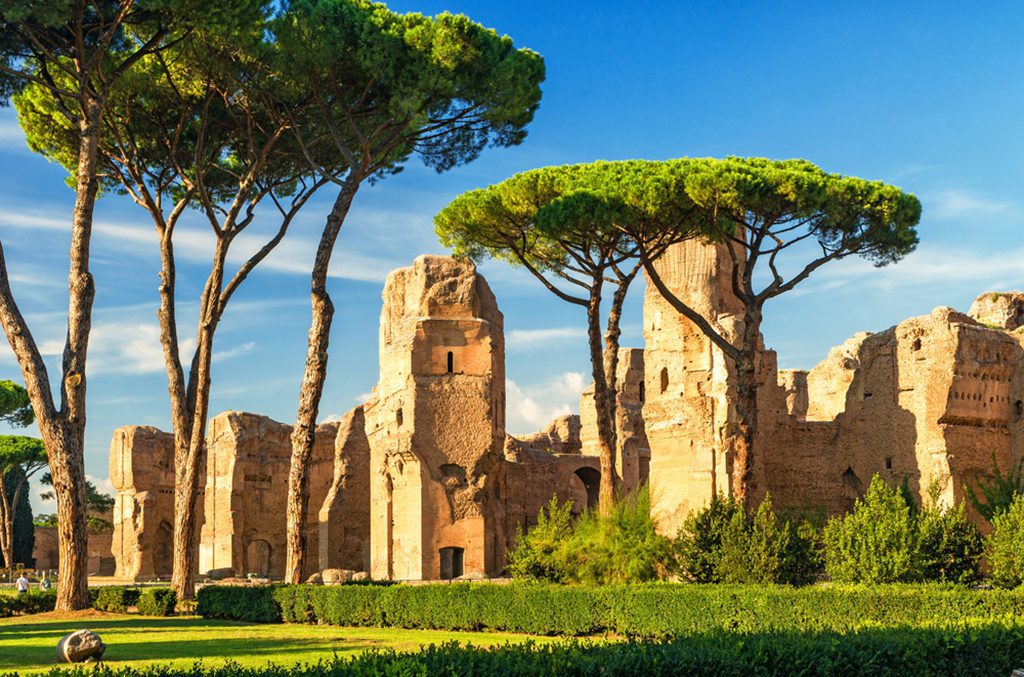
In the third century, Emperor Caracalla commissioned the construction of the Baths of Caracalla, the greatest public baths in Rome. This was done as political propaganda; the emperor only wanted the people to like him.
For more than three hundred years, the baths served the community. Although the structure is now in ruins due to neglect, theft, and an earthquake, its vastness and creativity continue to amaze visitors.
24. Villa Farnesina
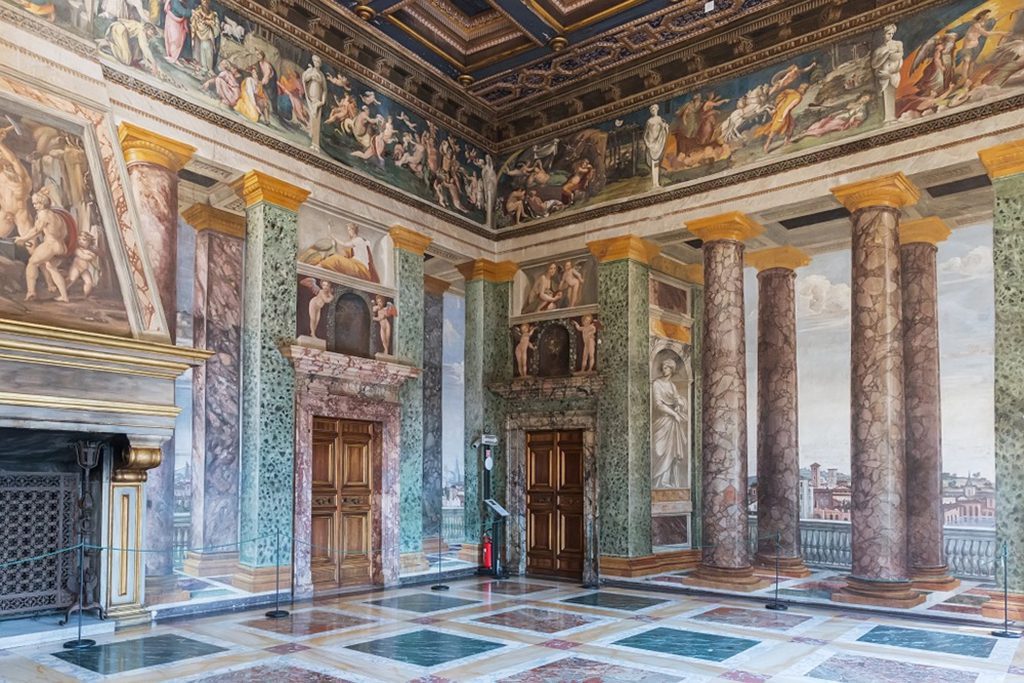
Home Farnesina, a villa in the Trastevere district, is a good option for those curious about the Renaissance lifestyles of Rome’s rich. The frescoes by Raphael at the Villa Farnesina are famous for their depictions of the Cupid and Psyche myth.
The banker and papal treasurer who commissioned the villa’s construction in 1506 also had works created by other artists.
23. Appian Way
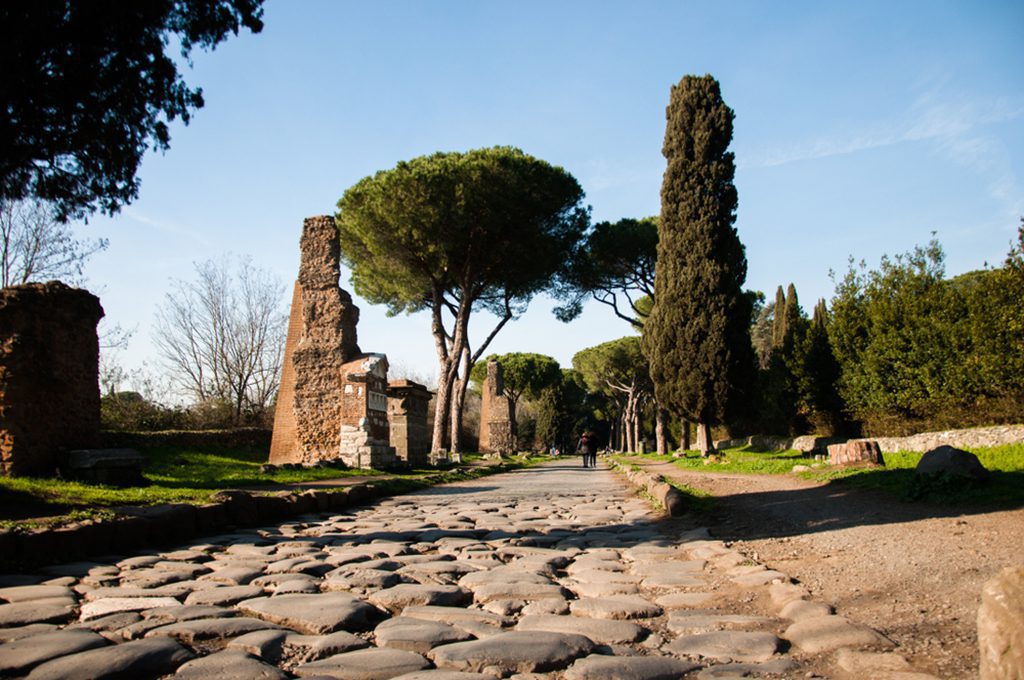
Connecting Rome to Brindisi in southern Italy, the Appian Way is the city’s most renowned ancient route. It was once a military route and was named after the Roman censor Appius Claudius Caecus.
The first eight kilometers (five miles) of the five hundred and fifty kilometers (three hundred and fifty) stone road are rife with historical landmarks. The first few miles of this ancient highway are dangerous for walkers due to the large volume of vehicles, but the road becomes much safer after that.
22. National Roman Museum
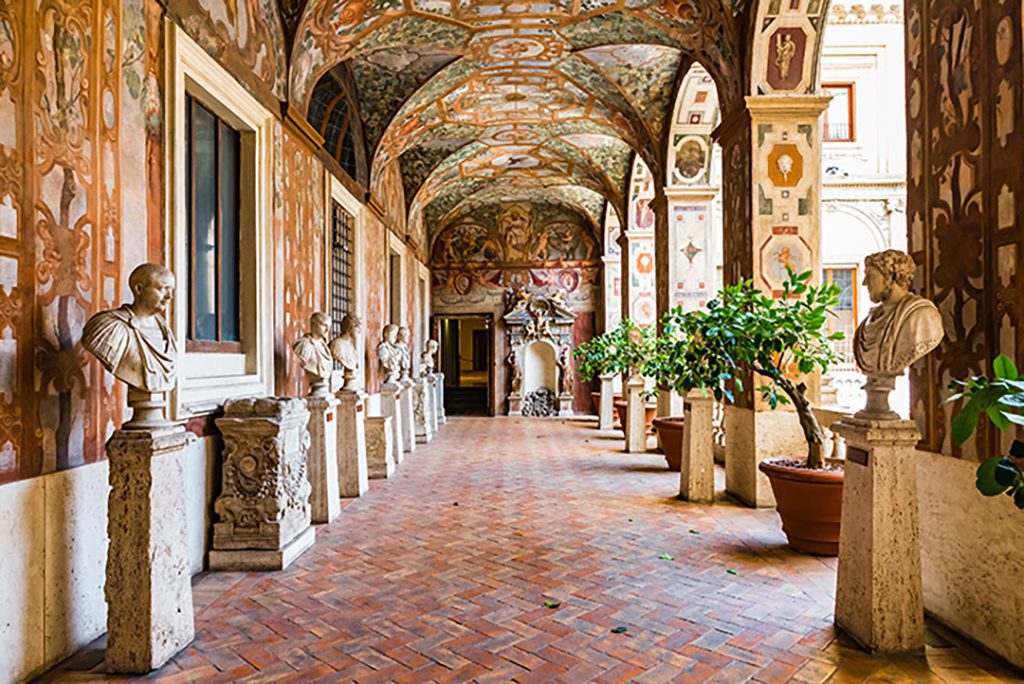
Don’t miss the National Roman Museum, also known as the Museo Nazionale Romano, if you want to learn as much as possible about Rome’s rich history, legacy, and culture.
The museum’s Roman artifacts are spread out across many locations. Instead, there are a number of exhibition sites spread out over the city. Visit the reconstructed historic site of the Baths of Diocletian for an up-close look at Roman baths, and explore amber, Roman artifacts, and jewelry in the spectacular Palazzo Massimo alle Terme.
21. Victor Emmanuel II Monument
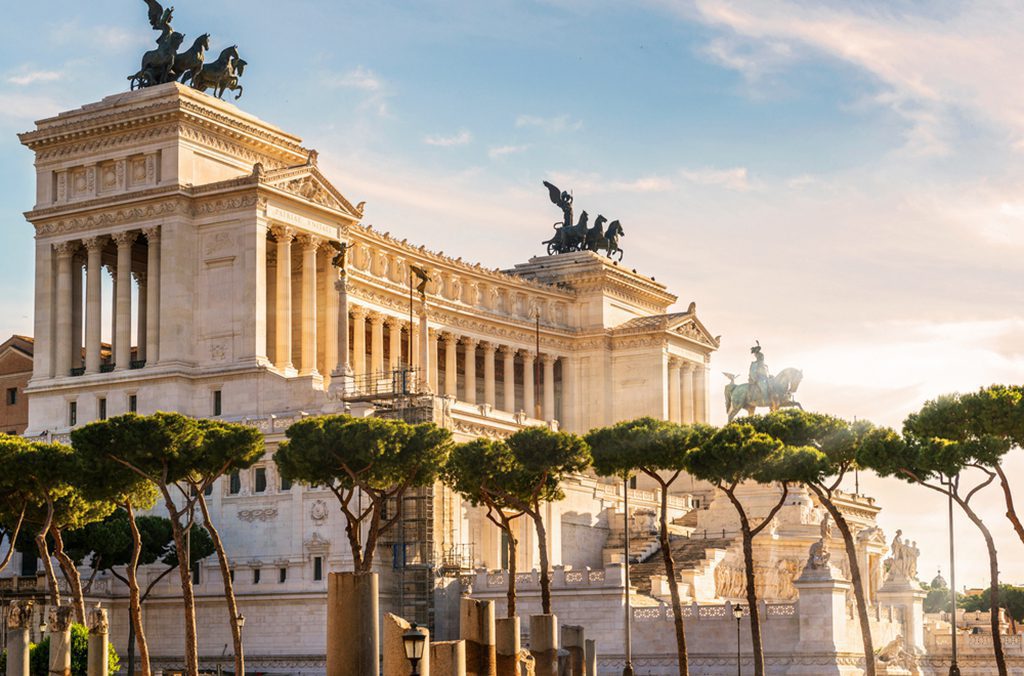
This massive structure, dedicated to Italy’s first king after unification, Victor Emmanuel, may seem like a block of white marble from the outside, but it in fact includes several chambers. Giuseppe Sacconi began work on the structure in 1885, and it wasn’t finished until 1925.
Rotating exhibits can be seen in several of the galleries, and there are two permanent museums dedicated to the subjects of Italian reunification and emigration. Although it’s not often regarded as one of Rome’s most attractive landmarks, the Victor Emmanuel Monument is well worth seeing, if for no other reason than the breathtaking panoramas afforded by its height.
20. Piazza del Popolo
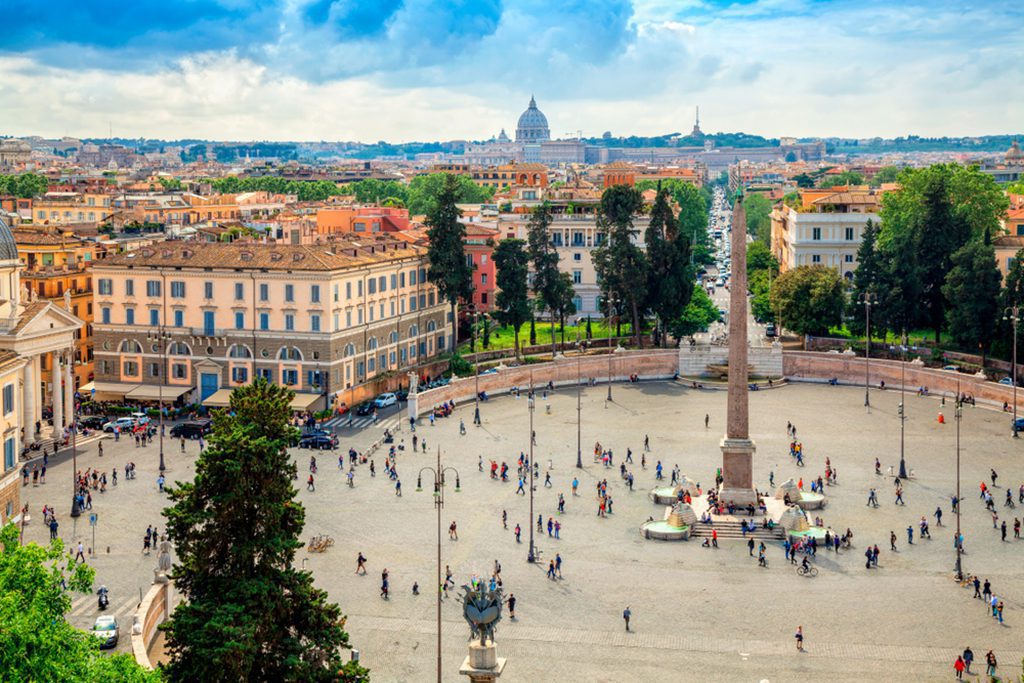
Since the time of the Roman Empire, the Piazza del Popolo has served as a wide oval square in northern Rome. It used to be the beginning of the main northbound route.
The area is bordered by three churches, but the real show-stopper is an ancient Egyptian obelisk. The Porta del Popolo, which leads to the Via Flaminia and on to the Adriatic shore, dominates the northern side of the square.
19. Santa Maria in Trastevere
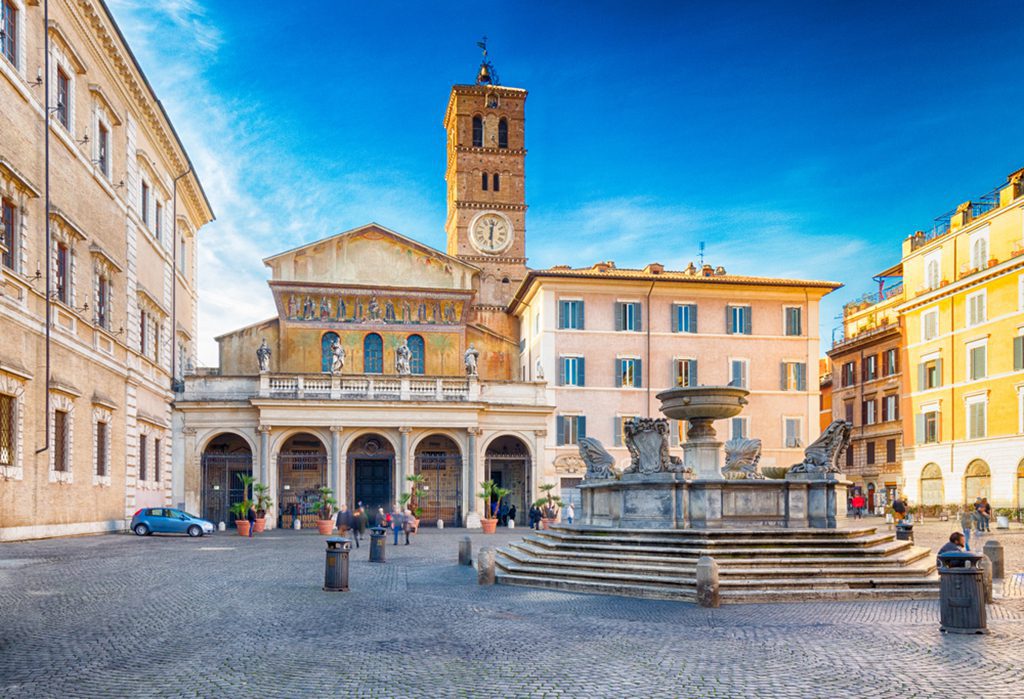
Most historians agree that the original Santa Maria in Trastevere church was constructed some time in the 4th century, making it one of Rome’s earliest churches. The church, which dates back to the 12th and 13th centuries and has undergone expansion and restoration, has some very stunning mosaics.
The mosaics on the façade of this church in Rome’s trendy Trastevere neighborhood make for a beautiful sight, particularly when the church and its tower are lit up at night.
18. Ostia Antica
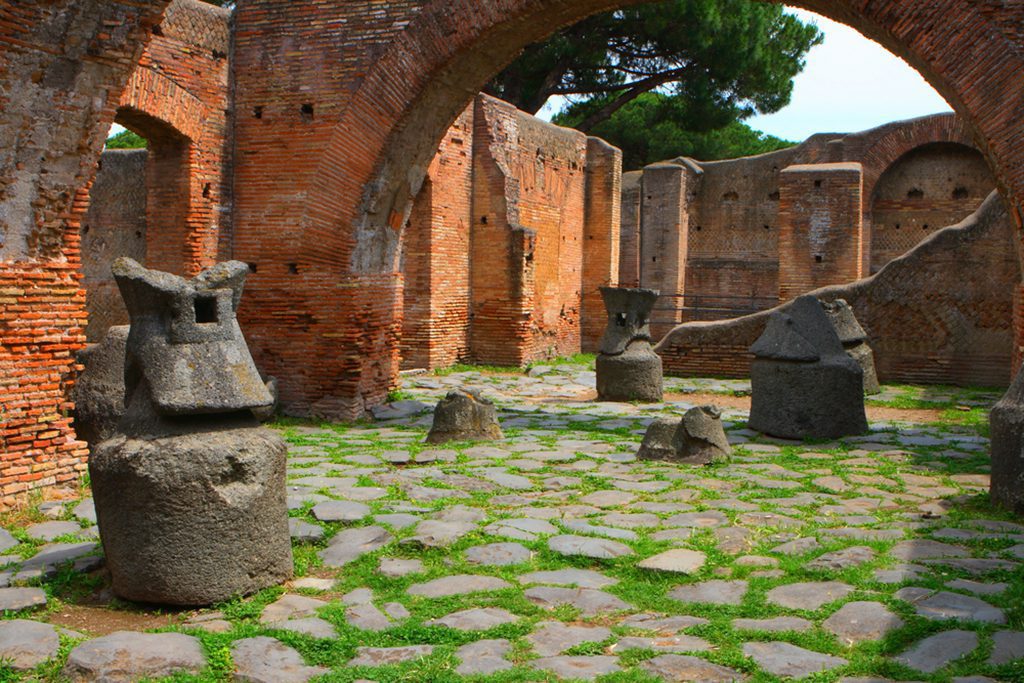
Ancient Rome’s seaport, Ostia Antica, is now a significant archaeological site. It sits near the mouth of the Tiber River, less than twenty miles from Rome. Many of the structures from the 4th century BC are still standing at this location.
The ancient public toilets of Ostia Antica are famous for transforming the restroom into a social hub, in addition to the structures’ exceptional frescoes and mosaics.
17. Basilica of San Clemente
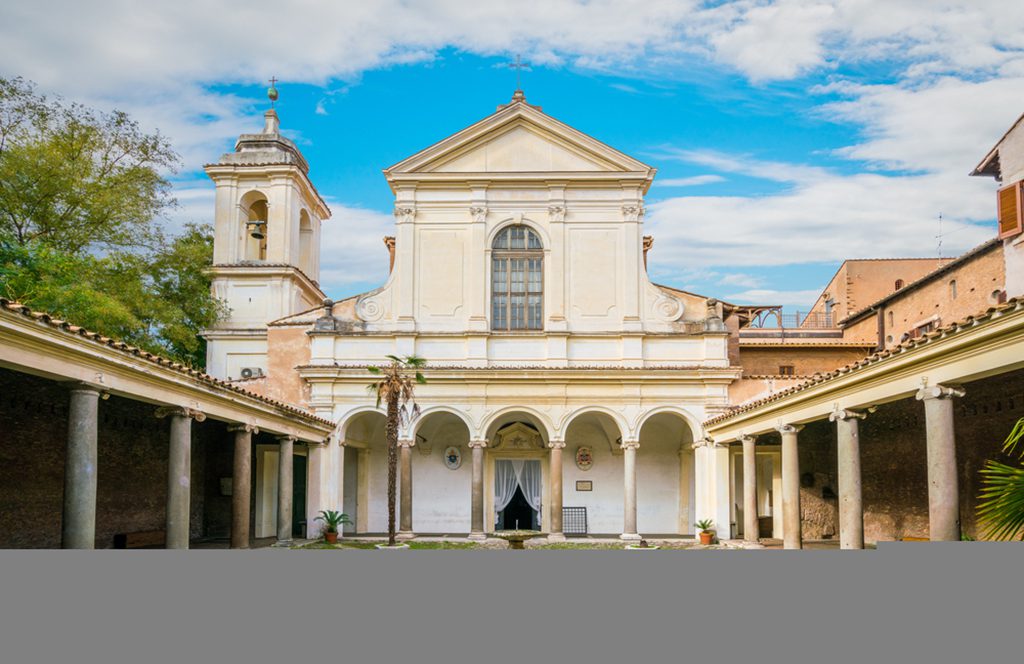
The 12th-century Basilica of San Clemente, mere steps from the Coliseum, was constructed over an even earlier Roman temple and a 4th-century church. Fabulous frescoes and mosaics adorn the inside of the current church.
The excavations of the first two floors are open to the public for a small price, and they provide a fascinating glimpse into ancient Rome.
16. Capitoline Museums
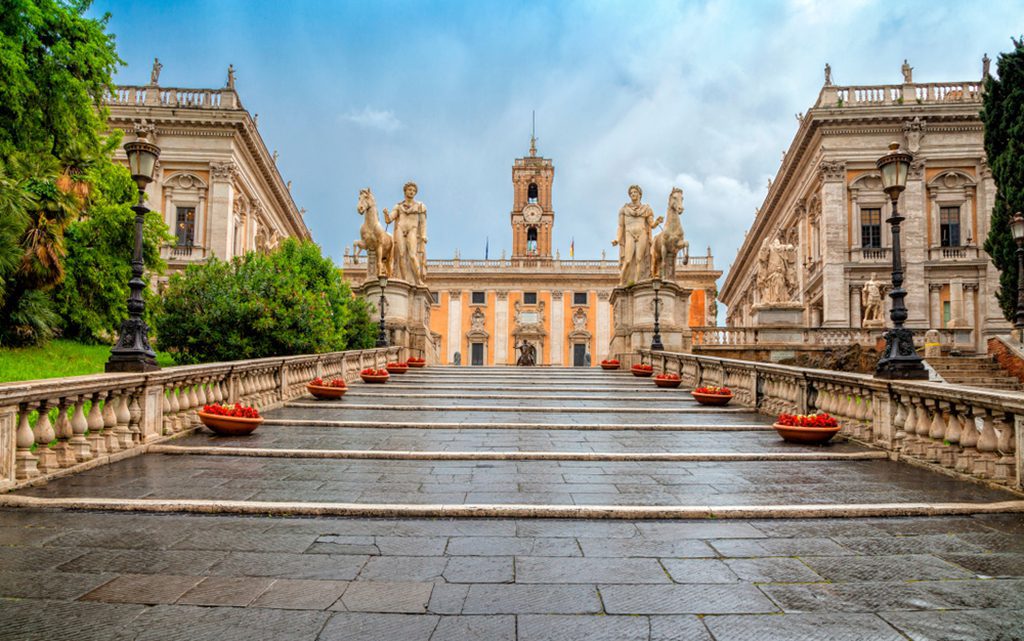
The Capitoline Museums were worth the 400-year wait it took to construct them following Michelangelo’s 1536 design. Starting with a papal bequest in the 15th century, the museums at Piazza del Campidoglio on Capitoline Hill now house an unparalleled collection of art and archeological exhibits. Among the treasures on display are works from the Middle Ages and the Renaissance, as well as ancient Roman statues and jewelry.
15. Palatine Hill
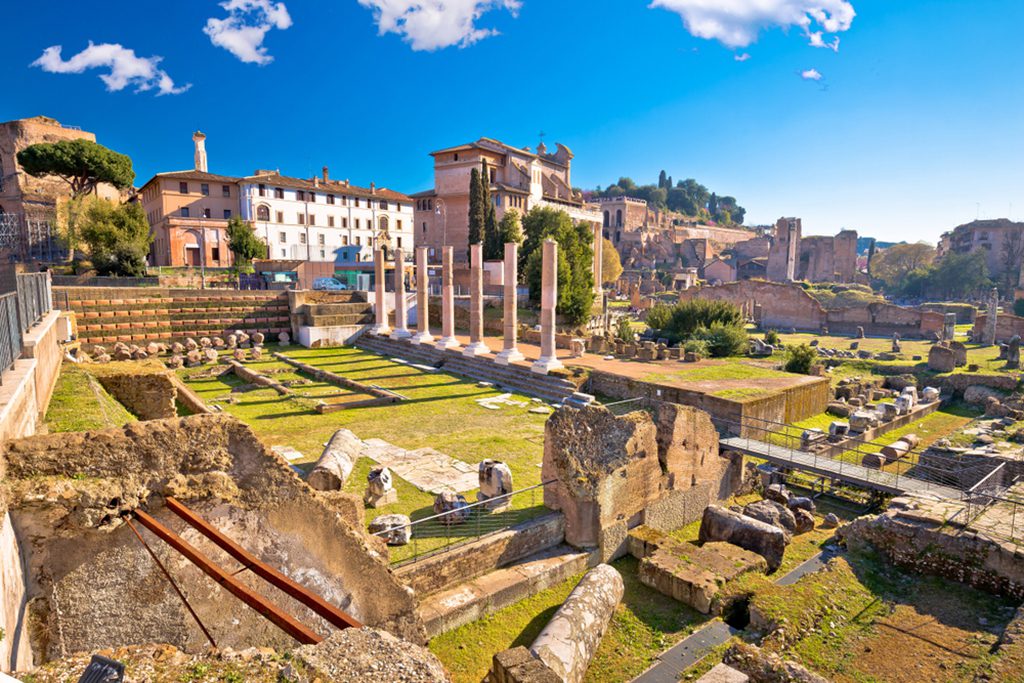
One of Rome’s Seven Hills, Palatine Hill, is mentioned in Roman mythology because it is said that a wolf discovered and raised the twins Romulus and Remus until a shepherd came along and saved them.
Whether or not this myth is genuine, Rome was really established on Palatine Hill. Ruins are all that is left of the hill that, during the Imperial era, was totally occupied by large palaces.
14. San Giovanni in Laterano
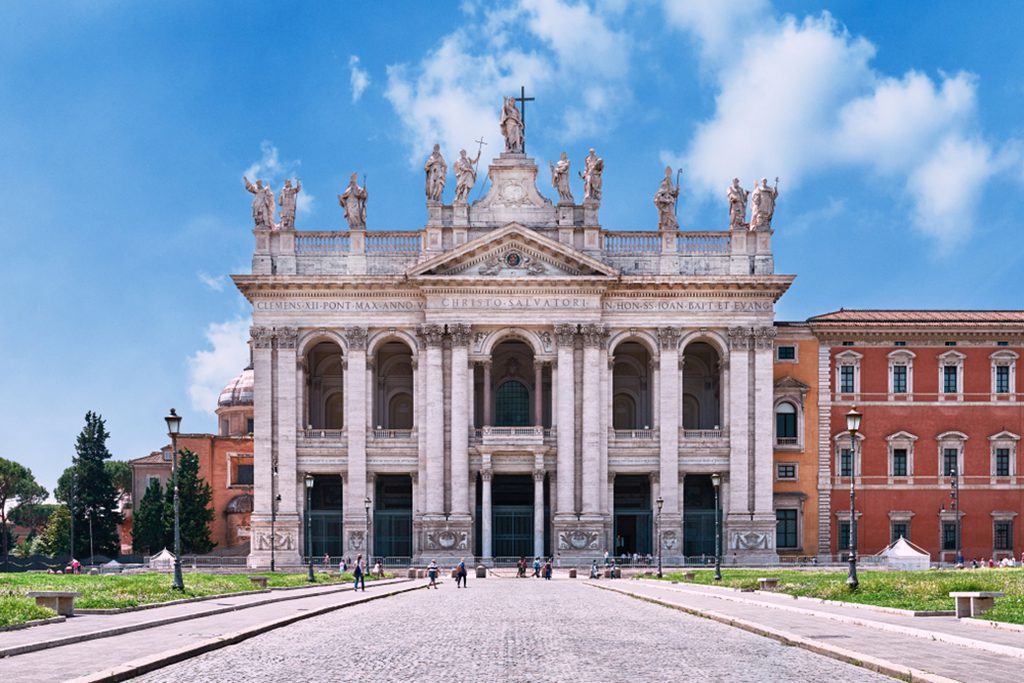
The Basilica of San Giovanni in Laterano (St. John Lateran) is one of Rome’s four main basilicas. The cathedral of the archbishop of Rome and the pope is dedicated to both John the Baptist and John the Evangelist.
Some say it was Rome’s first church dedicated to the Catholic faith. The outside isn’t as elaborate as some other churches, but the inside is stunningly adorned with mosaics, murals, and columns.
13. Galleria Borghese
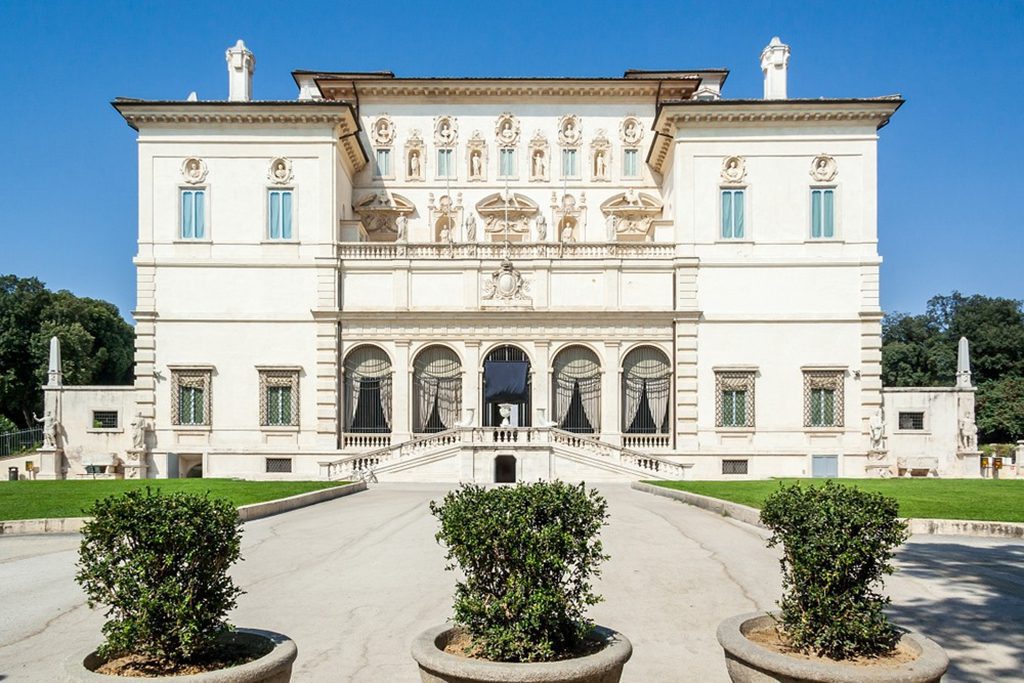
Cardinal Sciopione Borghese commissioned the construction of the Galleria Borghese in the 17th century as a place to host parties. The cardinal, a nephew of Pope Paul V, was also a supporter of the arts.
Now, many of the artworks, sculptures, and other artifacts in his collection can be seen on display at the gallery. See the National Museum of Musical Instruments and paintings by Titian and Bernini.
12. Basilica di Santa Maria Maggiore
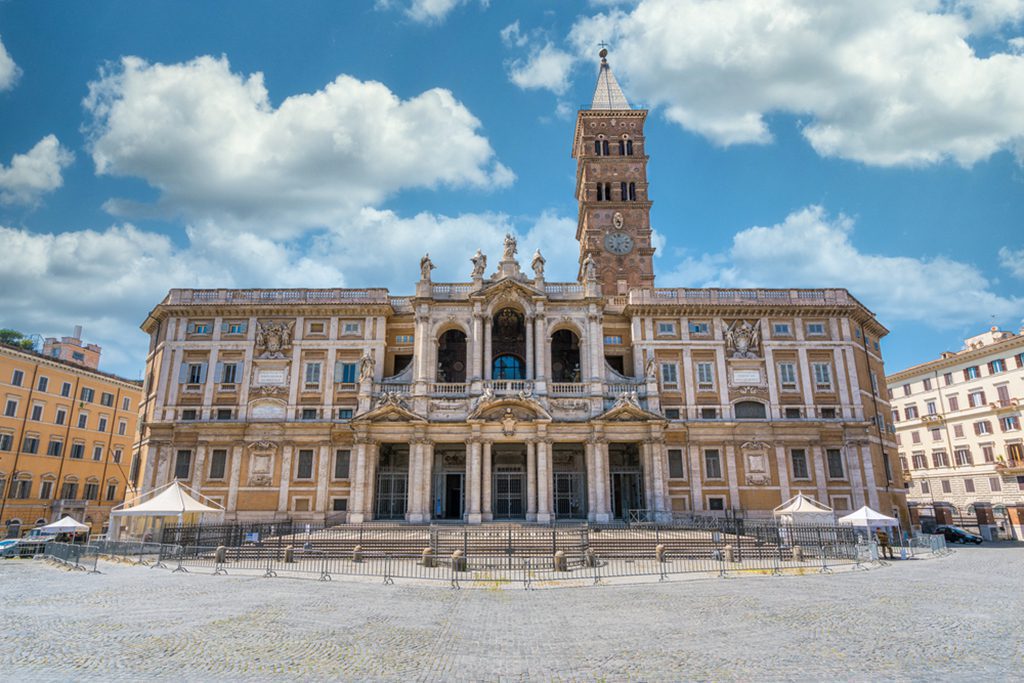
The Basilica of Santa Maria Maggiore (St. Mary Major), which dates back to the 4th century, is one of the holiest Catholic sites in all of Rome. Behind its 18th-century front is one of the city’s best-preserved Byzantine interiors.
Visitors to Rome on August 5 may wish to check out the Miracle of the Snows celebration, when thousands of white petals are dropped from the ceiling.
11. Saint Peter’s Square
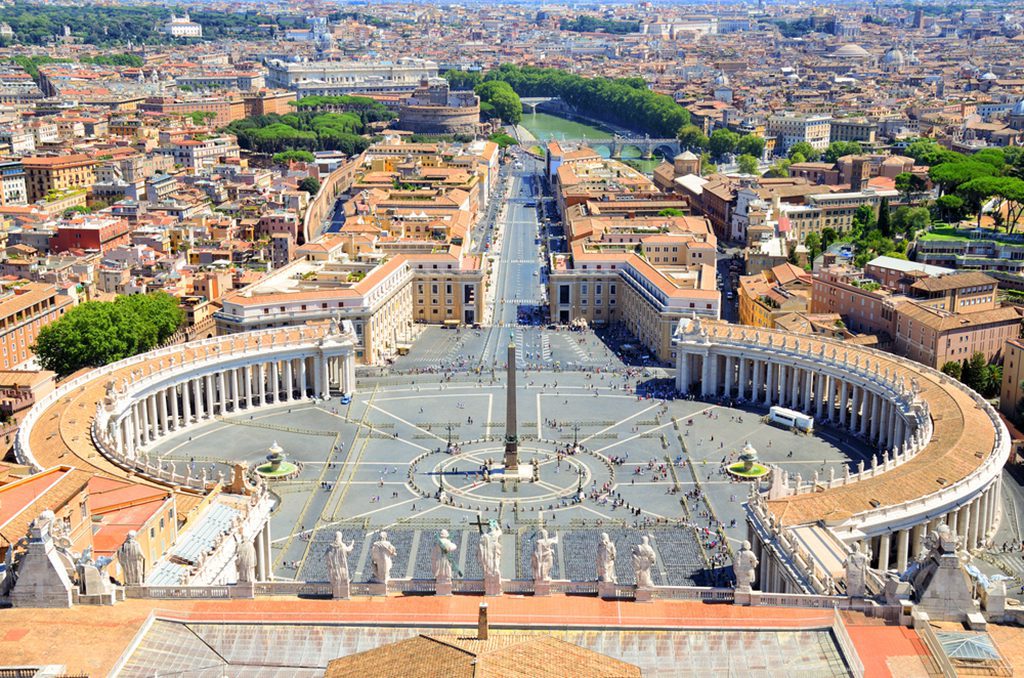
St. Peter’s Square, in the Vatican City, is the most well-known public square in the Eternal City. Thousands upon thousands of people come here to hear the pope speak. The square was designed by Bernini in the 17th century, and it has an elliptical form with colonnades on two sides, all of which can be seen in front of St. Peter’s Basilica.
The colonnades are topped by statues. The obelisk at its core was brought from Egypt to Rome by Emperor Augustus.
10. Campo de’ Fiori
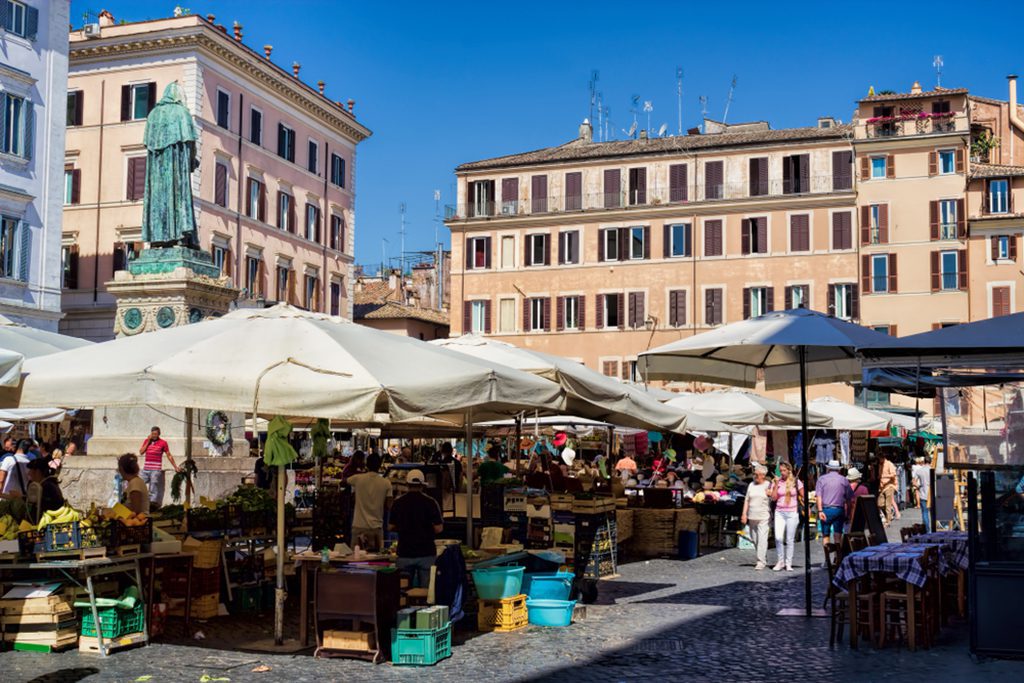
Located south of Piazza Navona, Campo de’ Fiori is a rectangular space that serves as a marketplace during the day and a hotspot for students and visitors looking to let loose at night. The area was once a meadow in the Middle Ages, when the name was first given.
A daily vegetable market has made this market a bustling location recently (every morning except Sundays). The market is a great place to pick up some fresh groceries, as well as seafood, meat, flowers, and spices. Restaurants and cafés line the area, making it a pleasant location to stop for lunch or dinner after a day of shopping or sightseeing.
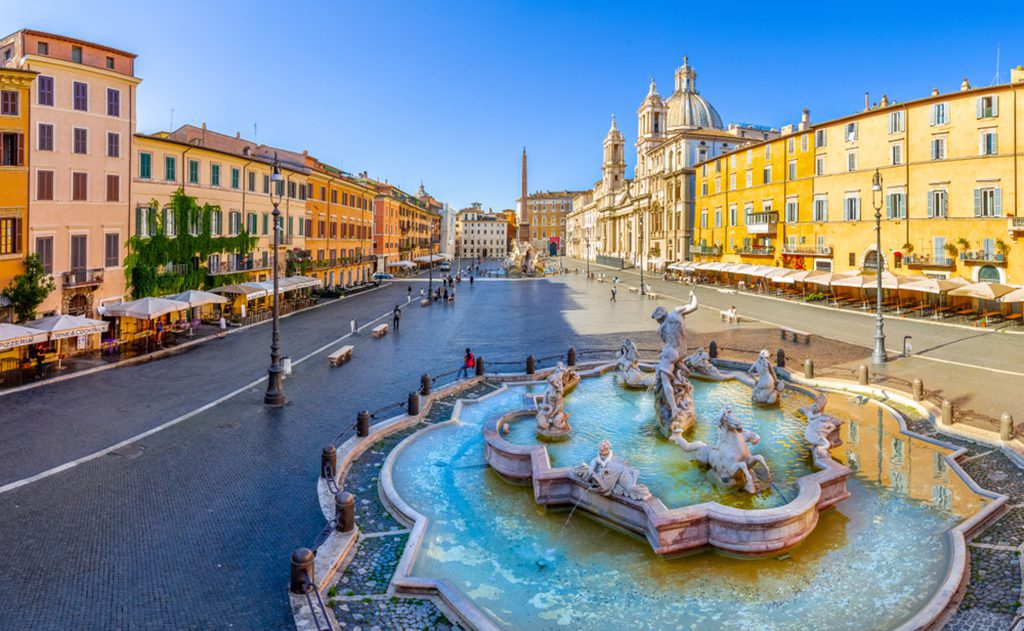
Piazza Navona, one of Rome’s most well-known squares, dates back to the 15th century and was designed to mimic the layout of the nearby demolished Stadium of Domitian.
With a wider arena than the Colosseum, Emperor Domitian’s stadium in 86 AD was mostly utilized for festivities and sports. There used to be a large crowd in this square, but now it is surrounded by buildings.
Three beautiful fountains now grace the square, which has become a favorite spot for people to relax with a coffee, window shop, and watch street artists perform.
8. Castel Sant’Angelo
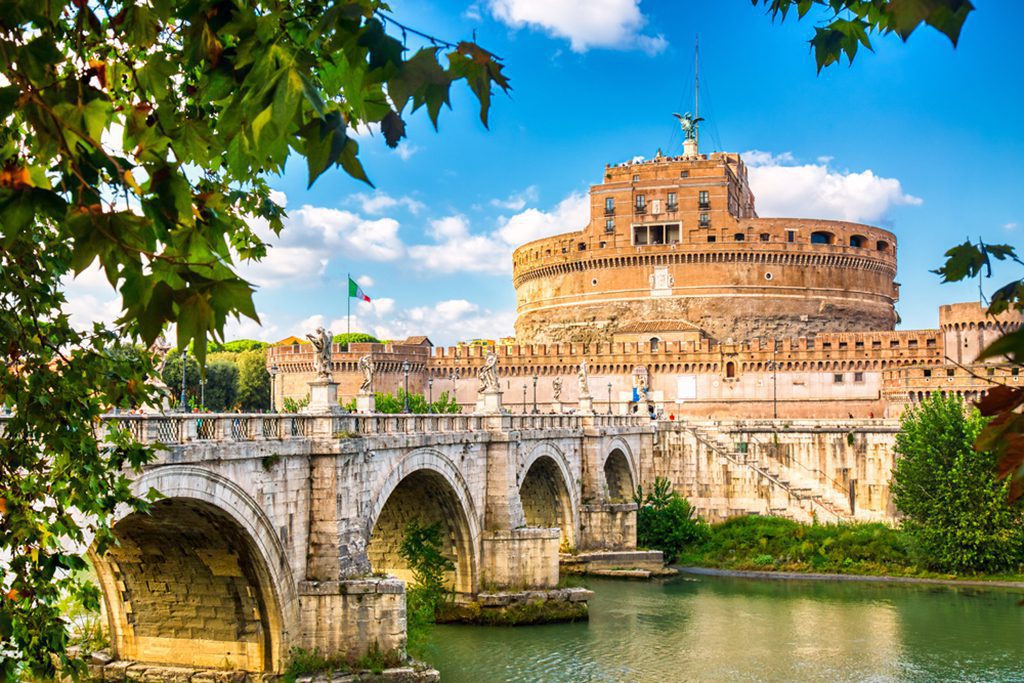
When construction of Castel Sant’Angelo began, its primary purpose was to serve as a mausoleum for Emperor Hadrian and his family. It was first constructed in 123 BC and subsequently transformed into a fortress and castle by the popes. When it was constructed, it was the highest structure in all of Rome.
Prior to the Visigoth invasion in 410, the ashes of earlier emperors had been buried there. The castel was formerly a prison but is now a museum. Famous for its appearance in the movie “Angels and Demons,” it is one of Rome’s most visited landmarks.
7. Roman Forum
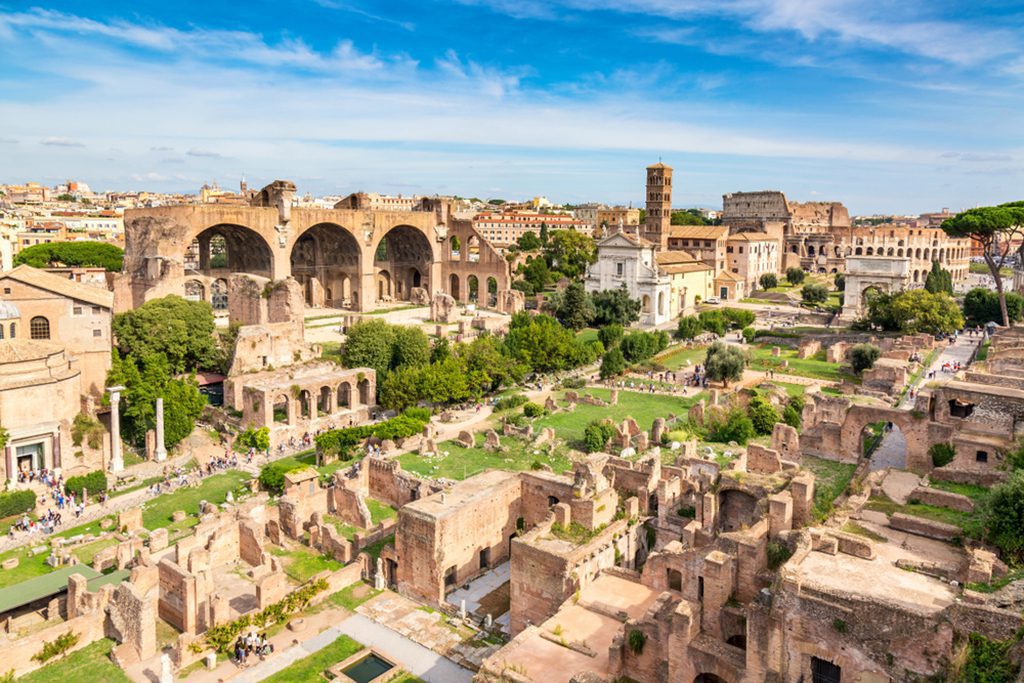
The Roman Forum (or Forum Romanum in Latin) was the bustling center of ancient Rome for centuries. It was the scene of triumphant processions and elections, as well as public speeches and commercial activity.
Architectural remnants like the Arches of Septimius Severus and Titus, the Temple of Antoninus Pius and Faustina, and the Temple of Saturn can still be seen amid the massive ruin that is the Forum today.
6. Spanish Steps
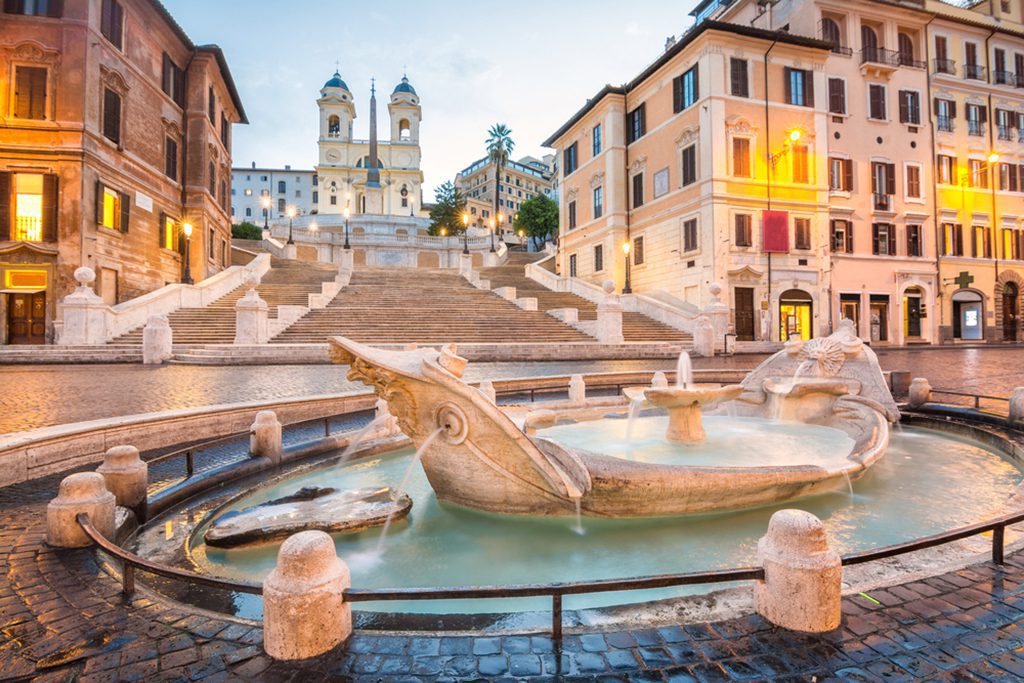
The Spanish Steps, a massive stairway of 135 steps, were built between 1721 and 1725 using French funding to connect the Bourbon Spanish Embassy to the Holy See with the French church Trinità dei Monti.
Visitors and locals alike flock to the stairs on a regular basis. Pink azaleas are a yearly tradition on the stairs, and they’re always in full bloom in May. The Piazza di Spagna (Spanish Square) and the somber Fontana della Barcaccia were created by Gian Lorenzo Bernini and can be seen at the base of the Spanish Steps.
5. Trevi Fountain
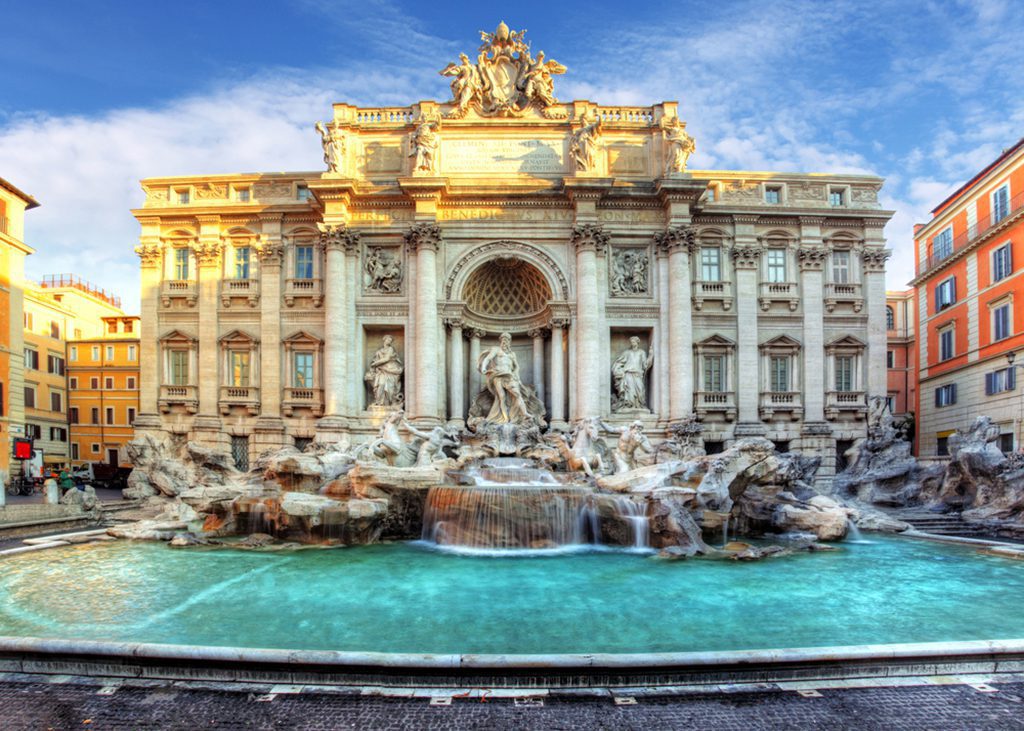
This famous Baroque fountain was finished in 1762 according to a design by Nicola Salvi, and it displays a legendary sculptural composition of Neptune, god of the sea, surrounded by two Tritons.
Trevi is the name of a triangular intersection near the Trevi Fountain in Rome, where the ancient Aqua Virgo aqueduct came to an end (tre vie).
Fellini’s Dolce Vita, starring Anita Ekberg and Marcello Mastroianni, had a memorable sequence by the fountain. Since then, it has risen to prominence as one of Rome’s most visited landmarks. If you toss a coin into the fountain, you’ll be able to visit Rome again someday, according to the legend.
4. Vatican Museums
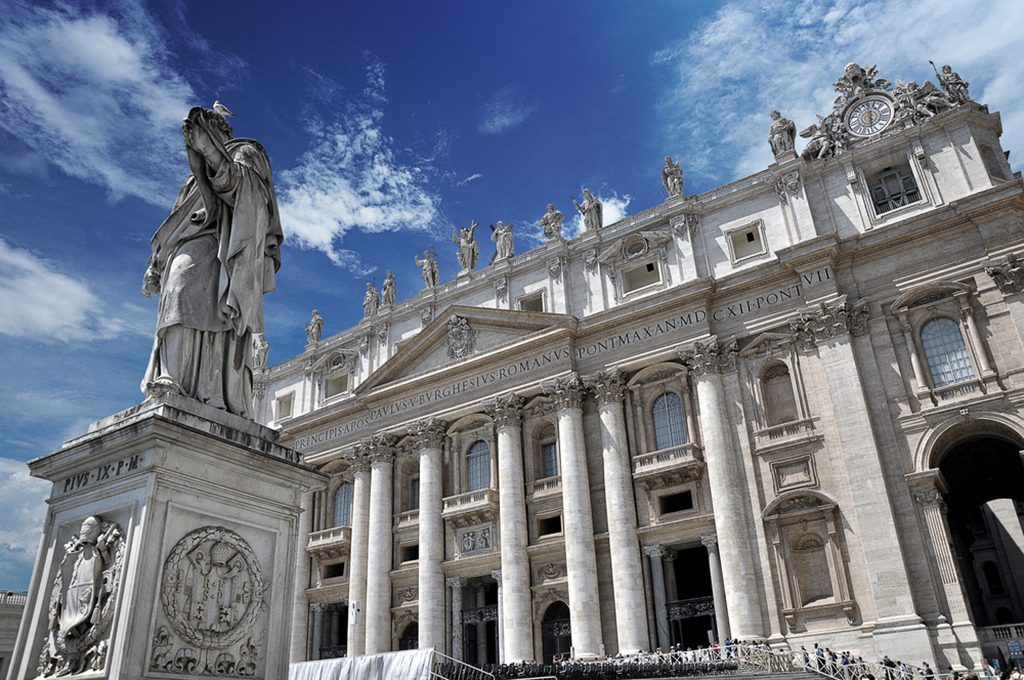
Pope Julius II’s collection of sculptures from the 16th century is considered the museum’s genesis. These artifacts are now housed in a number of museums across Vatican City and are considered among the most precious in the world. The museum’s spiral staircase, the Raphael Rooms, and the ornate Sistine Chapel are just a few highlights. The chapel ceiling was decorated by Michelangelo between 1508 and 1512.
Most people now consider Michelangelo’s ceiling and The Last Judgment to be his finest works of art. The museums offer four itineraries ranging from an hour and a half to more than five hours to help manage the large numbers of visitors. The Sistine Chapel is at the conclusion of every tour.
3. Pantheon
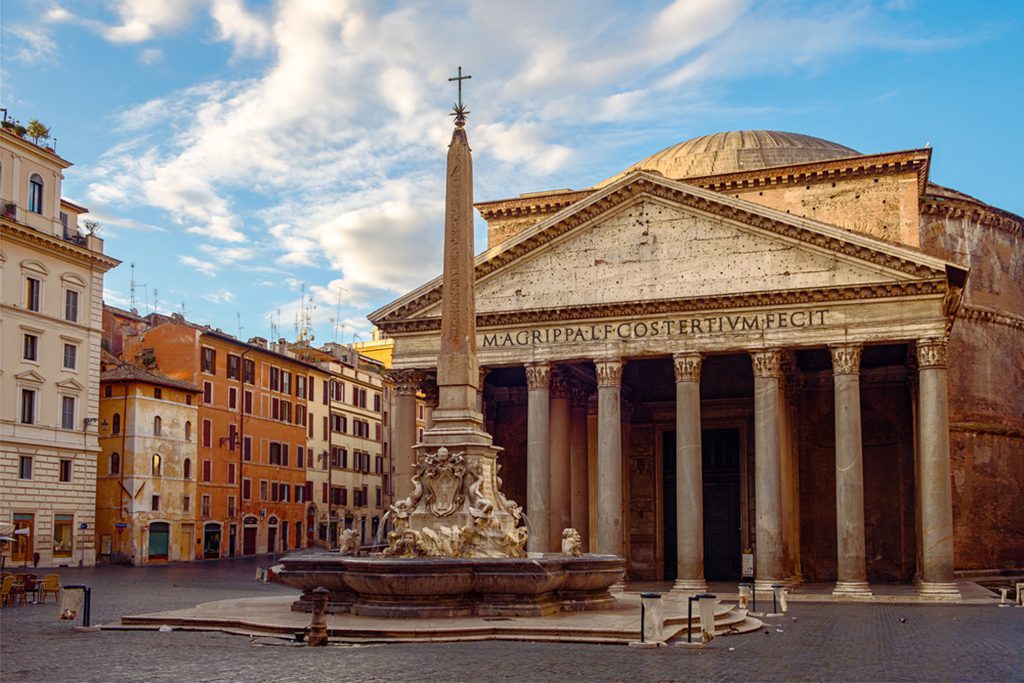
The Pantheon, a temple dedicated to all the Roman deities, was constructed in 126 AD and is one of the best preserved ancient Roman buildings. Since the 7th century, the structure has operated as a Roman Catholic church. This circular building’s front is supported by eight ornate granite Corinthian columns, while the smaller columns in the rear provide visual interest.
The Pantheon’s iconic dome is almost two thousand years old, yet it is still the biggest unreinforced concrete dome in the world. It’s widely thought that Marcus Agrippa built the Pantheon as a private temple for himself. Emperor Hadrian remodeled the existing structure in the second century.
2. St. Peter’s Basilica
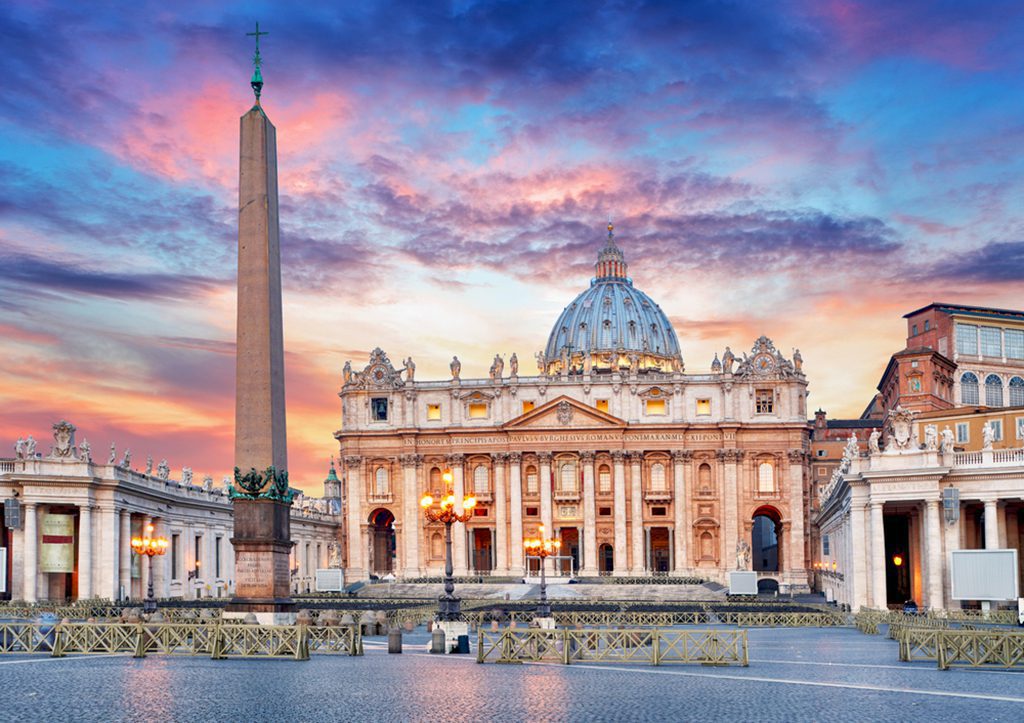
Basilica of St. Peter, the focal point of the Catholic faith and a prominent tourist attraction, is a massive basilica with a ceiling height of 120 meters (400 feet) that would allow both the space shuttle and its booster rockets to fit within, as well as the Statue of Liberty.
Peter, an apostle who is thought to have been the first pope, was crucified and buried near where the basilica is now. The existing structure was built between 1506 and 1615. Michelangelo built the dome, and Bernini created the magnificent St. Peter’s Square, among many other notable artists who contributed to the complex and its surrounds.
1. Colosseum
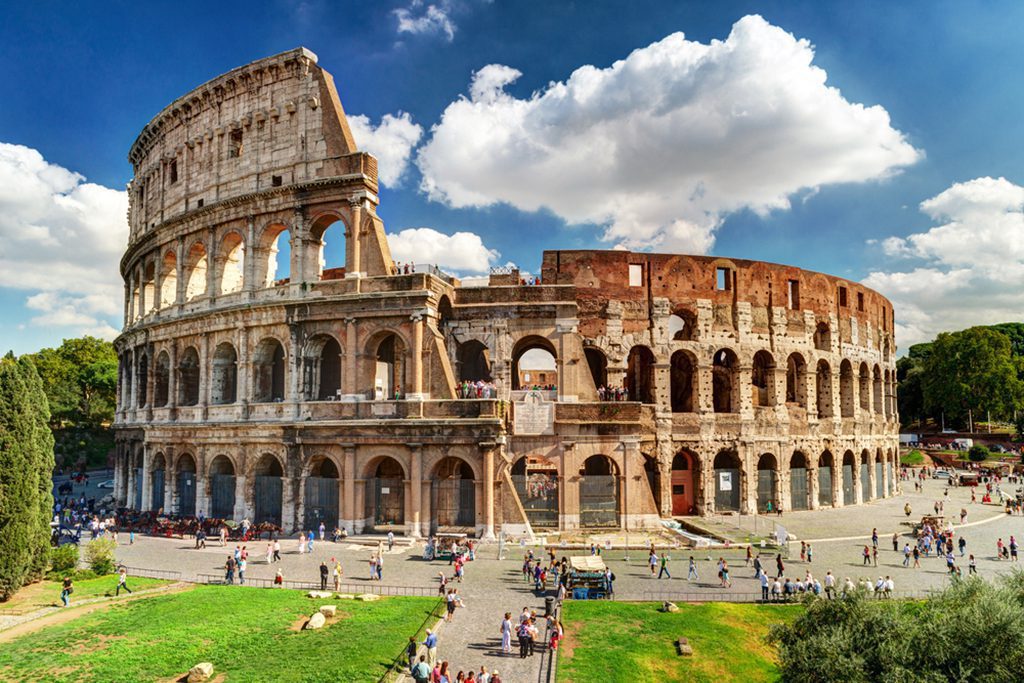
As with many other sights in Rome, the Colosseum is a popular draw for visitors. Emperor Vespasian of the Flavian dynasty began building it in 72 A.D., and his son Titus completed it in 80 A.D.
Up to 50,000 spectators could fit inside the elliptical amphitheater to witness gladiators fight, individuals being publicly executed, and other shows. Stone and concrete were used to construct what was then the biggest amphitheater in the Roman Empire. It was built using some of the most advanced techniques of the day and is widely regarded as a Roman engineering and architectural masterpiece.


